Finding All Butterflies – Creating a Backyard Sanctuary
The sharp decline in butterfly populations is a result of habitat loss, climate change, and aggressive pesticide use. Deforestation, urbanization, and agricultural practices deprive butterflies of essential breeding and feeding grounds.
Climate shifts disrupt migration patterns and physiological processes, further imperiling these insects. Pesticides, particularly neonicotinoids and glyphosate, harm both larval and adult butterflies, leading to disorientation, developmental disruptions, and decreased survival rates.
Butterflies are critical for pollination and ecosystem balance, making their conservation essential. Embracing conservation strategies and sustainable practices will be key to reversing these trends and understanding the broader ecological impacts.
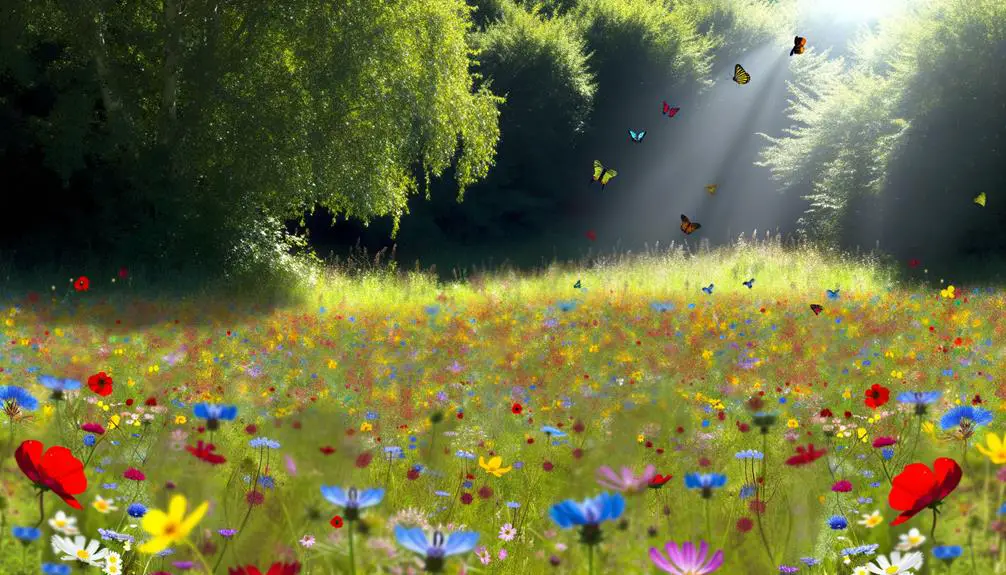
Key Takeaways
- Habitat loss from deforestation, urbanization, and agriculture drastically reduces butterfly populations.
- Climate change alters ecosystems, disrupting butterfly physiology, behavior, and distribution.
- Pesticide use harms butterflies directly and destroys essential food plants like milkweed.
- Altered migration patterns lead to resource scarcity and increased predation risks.
Decline in Butterfly Populations
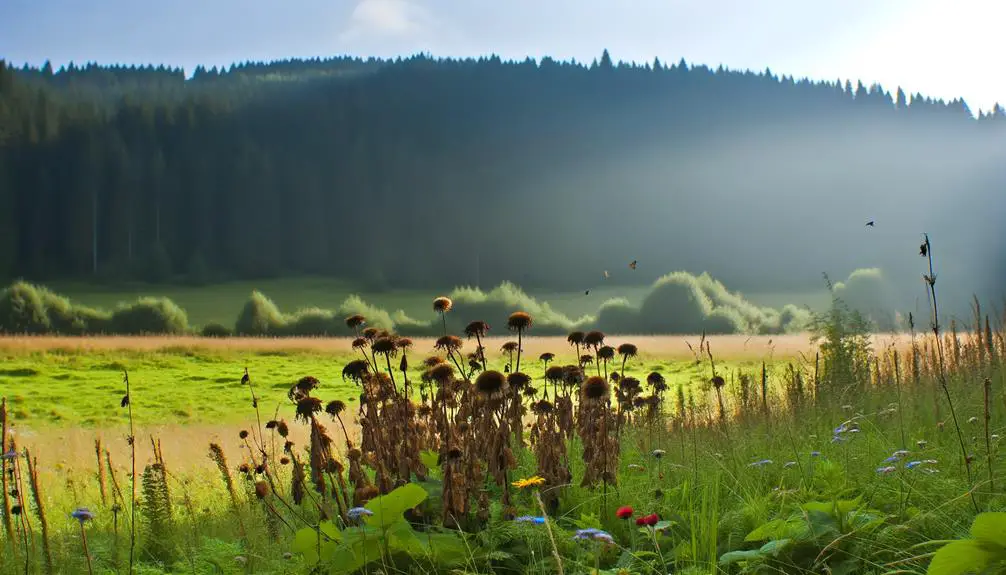
The decline in butterfly populations has been meticulously documented, revealing a multifaceted crisis influenced by habitat loss, climate change, and pesticide usage.
Scientific studies have highlighted that these factors synergistically contribute to diminishing numbers. Climate change, for instance, alters the phenology and distribution of butterflies, disrupting their life cycles and migratory patterns.
Meanwhile, pesticide usage, particularly neonicotinoids, directly impacts larval development and adult vitality.
The cumulative effect of these stressors has led to significant population declines, as evidenced by longitudinal surveys and biodiversity assessments.
This alarming trend underscores the urgent need for extensive conservation strategies to mitigate these adverse influences and restore butterfly habitats to guarantee their survival.
Understanding these dynamics is essential for informed ecological stewardship.
Impact of Habitat Loss
The precipitous decline in butterfly populations can be directly attributed to habitat loss driven by deforestation, urbanization, and changes in agricultural practices.
Deforestation eradicates essential breeding grounds, while urbanization fragments habitats, creating ecological barriers.
Additionally, modern agricultural methods often lead to the destruction of native flora, further compromising the ecological niches critical for butterfly survival.
Deforestation and Butterfly Decline
Rapid deforestation, driven by agricultural expansion and urban development, has precipitated a significant decline in butterfly populations by severely disrupting their natural habitats.
Fragmentation of forests leads to the loss of host plants vital for butterfly larvae and nectar sources for adults. This disruption not only reduces food availability but also impedes migration routes and breeding grounds.
Studies indicate that butterflies are highly sensitive to habitat changes, with many species unable to adapt to the altered environments. The microclimatic conditions of forest interiors, essential for butterfly thermoregulation, are also compromised.
Consequently, deforested areas exhibit lower butterfly diversity and abundance, undermining their ecological roles as pollinators and indicators of environmental health.
The urgency to mitigate habitat destruction is paramount for conservation efforts.
Urbanization's Ecological Effects
Urbanization has profoundly altered ecological landscapes, leading to significant habitat loss and fragmentation, which directly impacts butterfly populations and biodiversity.
As natural habitats are converted into urban areas, crucial resources such as host plants and nectar sources diminish, jeopardizing butterfly survival.
Fragmented habitats isolate populations, reducing genetic diversity and increasing vulnerability to environmental changes.
Additionally, urban areas often introduce pollutants and artificial lighting, further disrupting life cycles and behaviors.
Studies highlight a notable decline in both the abundance and diversity of butterflies in urbanized regions.
This trend underscores the urgency for sustainable urban planning that incorporates green spaces and corridors to mitigate habitat loss and support the conservation of these critical pollinators.
Agricultural Practices Impacting Habitats
Intensive agricultural practices have led to extensive habitat degradation and loss, greatly affecting butterfly populations and the broader ecological balance.
Monoculture farming, characterized by the cultivation of a single crop over large areas, reduces plant diversity essential for butterflies. Additionally, widespread use of pesticides and herbicides not only eliminates target pests but also decimates non-target species, including caterpillars and nectar sources.
The conversion of natural landscapes into farmland fragments habitats, impeding butterfly migration and breeding. Such disruption in their life cycles leads to population declines. Moreover, soil degradation from over-farming and irrigation practices diminishes the quality of remaining habitats.
These factors collectively contribute to a significant reduction in butterfly biodiversity, underscoring the need for sustainable agricultural practices.
Effects of Climate Change
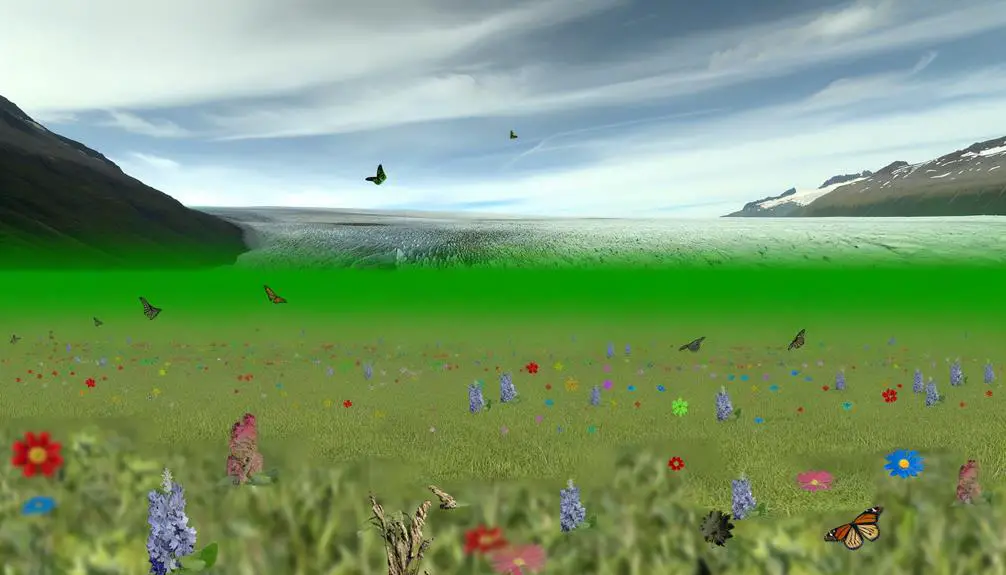
Climate change exacerbates habitat loss, leading to the fragmentation of environments essential for butterfly survival.
Rising temperatures disrupt the delicate balance of ecosystems, causing shifts in flora and fauna that butterflies depend on.
Consequently, these changes alter migration patterns, posing significant threats to their reproductive cycles and long-term viability.
Habitat Loss Impact
The accelerating pace of habitat loss, driven by the multifaceted impacts of climate change, has considerably disrupted the delicate ecosystems that butterflies depend on for survival. This environmental upheaval has led to dwindling butterfly populations, threatening their role as essential pollinators in many ecosystems. Without intervention, the butterfly extinction consequences could cascade through food chains, affecting plants, birds, and other species that rely on them. Protecting butterfly habitats is crucial to preserving biodiversity and maintaining ecological balance.
Deforestation, urbanization, and agricultural expansion eliminate critical breeding and feeding grounds. Additionally, altered precipitation patterns and increased frequency of extreme weather events further degrade these habitats.
The fragmentation of ecosystems restricts butterfly mobility and gene flow, leading to population declines. Furthermore, the loss of native plant species, crucial for nectar and larval food, exacerbates the situation.
These cumulative stressors not only reduce butterfly abundance but also threaten their biodiversity. Consequently, understanding and mitigating habitat loss are imperative for sustainable conservation strategies aimed at preserving these essential pollinators and the ecological services they provide.
Temperature Shifts Consequences
Rising global temperatures have profound implications on butterfly physiology, behavior, and distribution, thereby contributing to significant shifts in their populations. Elevated temperatures can accelerate metabolic rates, leading to increased energy demands and altered developmental timelines. This results in mismatches between life stages and the availability of essential resources, such as nectar and host plants.
In addition, temperature-induced stress can reduce reproductive success, compromising population viability. Behavioral changes, such as altered feeding and mating patterns, may also emerge, while geographical ranges shift poleward or to higher altitudes as butterflies seek cooler habitats.
These physiological and behavioral responses collectively contribute to a decline in local populations, highlighting the urgent need for thorough strategies to mitigate climate change impacts on these delicate pollinators.
Altered Migration Patterns
Shifts in temperature not only affect butterfly physiology but also fundamentally alter their migration patterns, leading to disrupted seasonal movements and potential mismatches with critical environmental cues.
As global temperatures rise, butterflies may initiate migration too early or too late, missing the ideal conditions for survival and reproduction. This temporal disjunction can result in arriving at breeding grounds when resources are scarce or encountering adverse weather conditions.
In addition, altered migration routes may expose butterflies to new predators and pathogens. The phenological shifts induced by climate change can consequently fragment populations and reduce genetic diversity, compounding the risk of extinction.
Understanding these complex dynamics is critical for developing conservation strategies to mitigate the adverse effects of climate change on butterfly populations.
Role of Pesticides
Pesticides play a notable role in the decline of butterfly populations by disrupting their habitats and directly harming both larvae and adult specimens.
These chemicals, including neonicotinoids and glyphosate, are pervasive in agricultural and urban environments.
Neonicotinoids impair the nervous systems of butterflies, leading to disorientation, reduced feeding, and ultimately, death.
Glyphosate, a common herbicide, eradicates milkweed—the primary food source for monarch caterpillars—leading to starvation and decreased reproduction rates.
Studies have shown that even sub-lethal doses of these pesticides can considerably reduce butterfly fitness and survival.
The widespread use of these substances creates a hostile environment for butterflies, severely impacting their ability to thrive and maintain healthy populations.
Effective mitigation strategies are urgently needed.
Importance of Butterflies
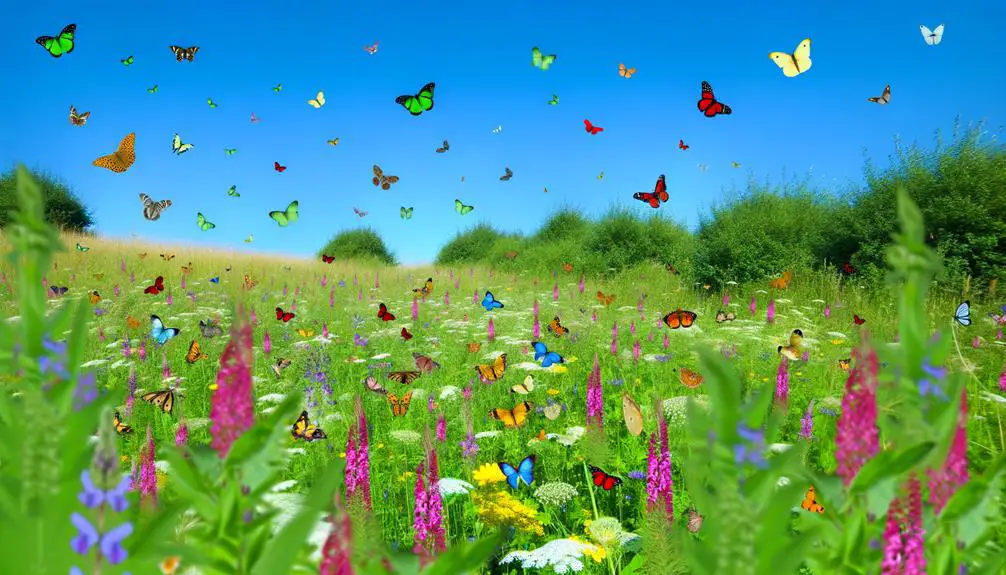
Understanding the detrimental impact of pesticides on butterfly populations emphasizes the need to explore the essential ecological roles these insects play in biodiversity and ecosystem functionality.
Butterflies contribute considerably to the food web, serving as prey for birds, mammals, and other insects. Their larvae, or caterpillars, act as herbivores that help regulate plant populations, thereby maintaining a balance within their habitats.
Additionally, butterflies serve as bioindicators, reflecting the health of the environment through their presence, diversity, and behavior. Their sensitivity to changes in habitat quality and climate conditions provides valuable data for ecological monitoring and conservation efforts.
Recognizing these roles underscores the necessity of safeguarding butterfly populations to guarantee the resilience and stability of ecosystems.
Pollination and Biodiversity
Butterflies, through their intricate and often specialized interactions with flowering plants, play an essential role in pollination, consequently directly contributing to biodiversity and the health of ecosystems.
These lepidopterans exhibit mutualistic relationships with angiosperms, facilitating gene flow and enhancing genetic diversity among plant populations. Their pollination activities support the reproductive success of a wide array of flora, which in turn sustains various trophic levels within the ecosystem.
Additionally, butterflies serve as bioindicators, reflecting the overall health of their habitats. The decline in butterfly populations, thus, signals broader ecological imbalances.
Such disruptions can lead to a decrease in plant reproductive success and a subsequent loss of habitat for numerous other species, underscoring the interconnectedness of pollination and biodiversity.
Conservation Efforts
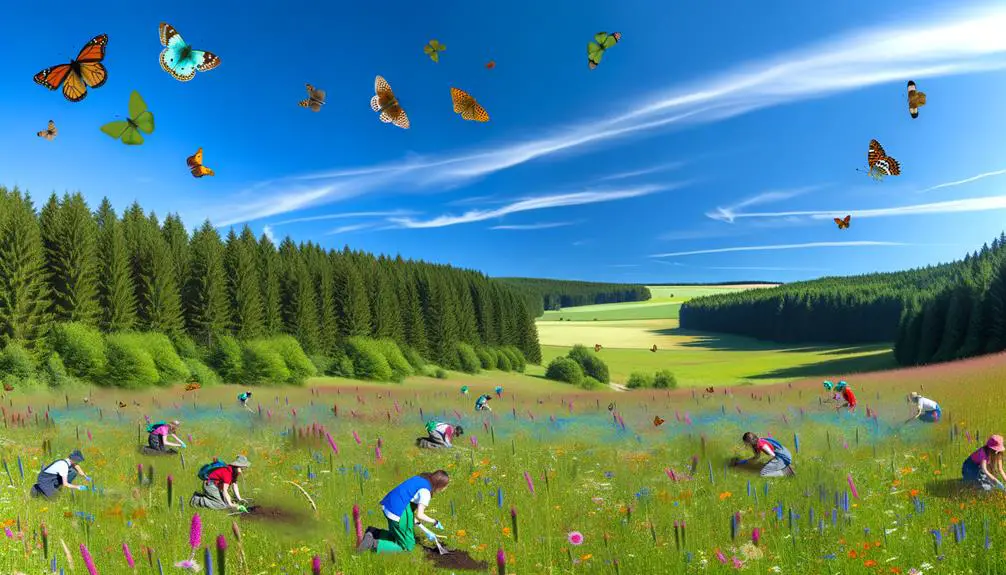
To mitigate the alarming decline in butterfly populations, targeted conservation efforts are being implemented globally to preserve their habitats and promote sustainable ecosystems.
These initiatives include the restoration of native plant species, which provide vital nectar sources and larval food plants. Conservationists are also focusing on creating and maintaining butterfly corridors to facilitate safe migration and genetic diversity.
In addition, integrated pest management practices are being adopted to reduce the usage of harmful pesticides that adversely affect butterflies.
Research and monitoring programs are essential in understanding population trends and the impacts of environmental changes.
Public education campaigns aim to raise awareness about the importance of butterflies in biodiversity and the necessity of protecting their natural habitats.
How You Can Help
Individuals can contribute to butterfly conservation by planting native flora in their gardens, which provides essential resources for these pollinators and supports local biodiversity.
Native plants offer nectar for adult butterflies and suitable host plants for caterpillars, fostering all life stages.
Additionally, reducing pesticide use is vital, as chemicals can be detrimental to both larvae and adult butterflies.
Creating microhabitats, such as adding water sources and shelter, can further enhance butterfly survival.
Citizen science initiatives, where individuals record butterfly sightings, contribute valuable data for tracking population trends.
Engaging in local conservation programs and educating others about the importance of butterflies can amplify efforts.
Through these actions, individuals play a significant role in mitigating the decline of butterfly populations.
Conclusion
The dwindling butterfly populations serve as an indicator of environmental distress, primarily due to habitat degradation, climatic fluctuations, and chemical interference.
This decline signifies broader ecological implications, given butterflies' essential role in pollination and biodiversity maintenance.
Conservation strategies are imperative to mitigate these adverse effects.
Collective efforts in habitat preservation, climate action, and pesticide regulation can contribute greatly to restoring butterfly numbers, thereby safeguarding ecological balance and ensuring the continuity of critical pollination processes.

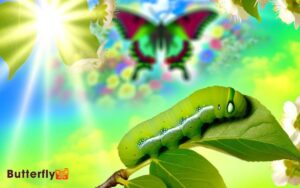


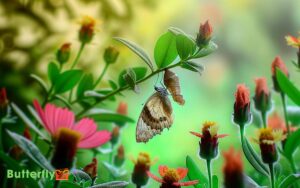


7rgdfr